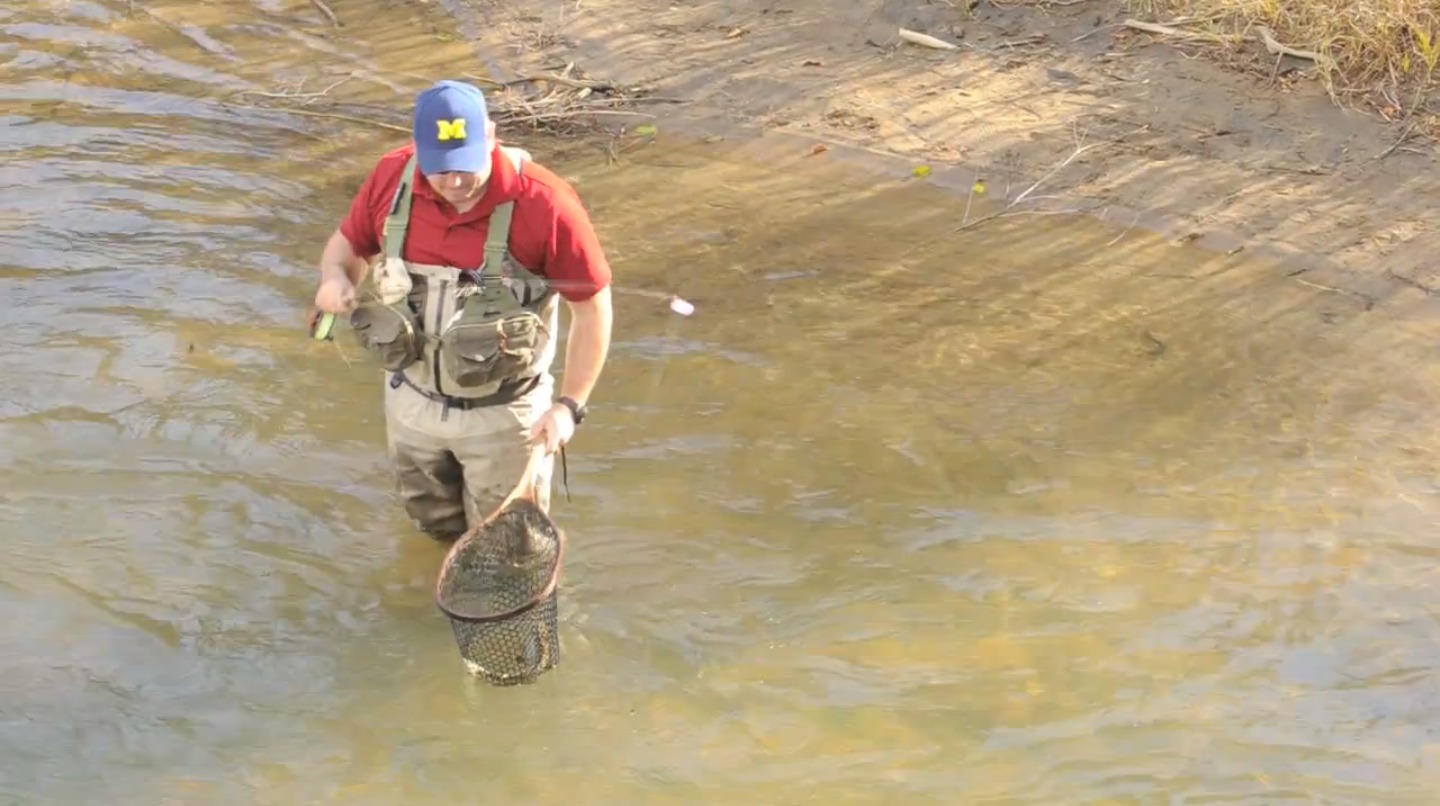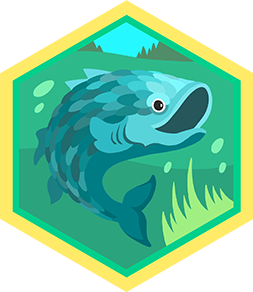Catch a fish
Learn simple rod and line fishing with adult supervision: assemble a basic pole, use bait or lures, cast safely, and practice catch and release techniques.



Step-by-step guide to catching a fish
How To Teach A Kid To Fish For The First Time
Step 1
Put on your life jacket so you are safe near the water.
Step 2
Ask an adult to choose a safe fishing spot and to check local fishing rules.
Step 3
Attach the reel to the rod until it is snug and will not wiggle.
Step 4
Tie the fishing line to the reel spool with a secure knot.
Step 5
Thread the line through all the guides from the rod tip down to the reel.
Step 6
Tie a small barbless hook or attach a lure to the end of the line using a secure knot.
Step 7
Put bait on the hook if you chose bait instead of a lure.
Step 8
Stand facing the water and make sure no one is behind you before you cast.
Step 9
Cast your line with a smooth motion while the adult watches for safety.
Step 10
Hold the rod tip up and watch the line for any tug or movement.
Step 11
When you feel a bite lift the rod tip firmly to set the hook.
Step 12
Reel the fish in slowly keeping steady tension on the line.
Step 13
Wet your hands before touching the fish so its protective slime stays safe.
Step 14
Use pliers to gently remove the hook and then release the fish back into the water.
Step 15
Share your finished creation on DIY.org
Final steps
You're almost there! Complete all the steps, bring your creation to life, post it, and conquer the challenge!


Help!?
What can we use if a barbless hook, specific lure, pliers, or a life jacket are hard to find?
If you don't have a barbless hook or a particular lure you can use a small single bait hook or a soft-plastic lure, substitute needle-nose or multi-tool pliers for hook removal, and wear any snug-fitting flotation vest while fishing near the water.
My reel wiggles after I attach it—how do I fix that so the rod is stable?
Loosen the reel seat, realign the reel foot until it sits flush, then tighten the seat until the reel is snug and recheck the knot tying the fishing line to the reel spool for security.
How can I adapt the steps for younger children or older kids learning to fish?
For younger children have an adult choose the safe fishing spot and hold the rod while they practice casting without a hook, and for older kids let them tie the line to the reel spool, cast under supervision, and practice hook removal with pliers.
What are some ways to extend or personalize the Catch a Fish activity after release?
Decorate a rod or tackle box, make simple homemade lures, keep a photo log of each catch to share on DIY.org, and reinforce wetting hands and using pliers when you remove the hook before release.
Watch videos on how to catch a fish
Teaching A TODDLER How To Fish?! Tips & Tricks For Fishing With Kids
Facts about rod-and-line fishing for kids
🪝 A bobber (float) is a kid-friendly tool that shows a bite by moving, dipping, or jerking — perfect for beginners learning to watch the line.
🎣 Humans have used hooks to catch fish for over 40,000 years — fishing is one of the oldest hobbies!
📏 Kids' fishing poles are usually shorter and lighter to make casting easier and safer for small hands.
🗺️ Many areas require a fishing license, have size or bag limits, or special rules for kids — always check local regulations before you fish.
🐟 Proper catch-and-release (barbless hooks, gentle handling, minimal air exposure) often gives fish better than a 90% chance to survive.
How do I teach my child to fish with a rod and line?
What materials do I need to teach my child rod-and-line fishing?
What ages is rod-and-line fishing suitable for children?
What safety tips and catch-and-release techniques should parents teach?


One subscription, many ways to play and learn.
Only $6.99 after trial. No credit card required



